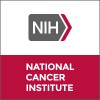
Safety and Efficacy of PHP in the Treatment of Shock Associated With Systemic Inflammatory Response...
ShockSystemic Inflammatory Response SyndromeTo determine the safety and effectiveness of pyridoxylated hemoglobin polyoxyethylene conjugate (PHP) administered by continuous intravenous (IV) infusion in systemic inflammatory response syndrome (SIRS) patients with shock. PHP is a human-derived chemically modified hemoglobin preparation. PHP selectively scavenges excess nitric oxide (NO) and does so in a catalytic, concentration-dependent reaction that results in the formation of the non-toxic NO metabolite, nitrate. PHP is postulated to reduce excess, toxic levels of NO while allowing critical beneficial levels of the molecule to persist.

Bevacizumab in Treating Patients With Myelodysplastic Syndrome
LeukemiaMyelodysplastic Syndromes1 moreRATIONALE: Monoclonal antibodies, such as bevacizumab, can block cancer growth in different ways. Some block the ability of cancer cells to grow and spread. Others find cancer cells and help kill them or deliver cancer-killing substances to them. PURPOSE: This phase I/II trial is to see if bevacizumab works in treating patients who have myelodysplastic syndrome.

Antithymocyte Globulin Compared With Supportive Care in Treating Patients With Myelodysplastic Syndrome...
Myelodysplastic SyndromesRATIONALE: Immunosuppressive therapy may improve bone marrow abnormalities and may be effective treatment for myelodysplastic syndrome. It is not yet known whether immunosuppressive therapy is more effective than supportive care in treating myelodysplastic syndrome. PURPOSE: Randomized phase II trial to compare the effectiveness of antithymocyte globulin with that of supportive care in treating patients who have myelodysplastic syndrome.

Donor Stem Cell Transplant in Treating Patients With Relapsed Hematologic Cancer
LeukemiaLymphoma4 moreRATIONALE: Giving low doses of chemotherapy, such as fludarabine and busulfan, before a donor bone marrow or peripheral blood stem cell transplant helps stop the growth of cancer cells. It also stops the patient's immune system from rejecting the donor's stem cells. The donated stem cells may replace the patient's immune system and help destroy any remaining cancer cells (graft-versus-tumor effect). Giving an infusion of the donor's T cells (donor lymphocyte infusion) after the transplant may help increase this effect. Sometimes the transplanted cells from a donor can also make an immune response against the body's normal cells. Giving immunosuppressive therapy after the transplant may stop this from happening. PURPOSE: This phase II trial is studying how well donor bone marrow or peripheral stem cell transplant works in treating patients with relapsed hematologic cancer after treatment with chemotherapy and autologous stem cell transplant.

PS-341 in Treating Patients With Refractory or Relapsed Acute Myeloid Leukemia, Acute Lymphoblastic...
Adult Acute Promyelocytic Leukemia (M3)Blastic Phase Chronic Myelogenous Leukemia6 morePhase I trial to study the effectiveness of PS-341 in treating patients who have refractory or relapsed acute myeloid leukemia, acute lymphoblastic leukemia, chronic myeloid leukemia in blast phase, or myelodysplastic syndrome. PS-341 may stop the growth of cancer cells by blocking the enzymes necessary for cancer cell growth

Busulfan and Cyclophosphamide Followed by Bone Marrow Transplantation in Treating Patients With...
LeukemiaMyelodysplastic Syndromes1 moreRATIONALE: Drugs used in chemotherapy use different ways to stop cancer cells from dividing so they stop growing or die. Combining chemotherapy with donor bone marrow transplantation may allow the doctor to give higher doses of chemotherapy drugs and kill more cancer cells. PURPOSE: Phase II trial to study the effectiveness of busulfan and cyclophosphamide followed by bone marrow transplantation in treating patients who have acute myelogenous leukemia or myelodysplastic syndrome.

Chemotherapy Plus Bone Marrow Transplantation and Filgrastim in Treating Patients With Acute Myelogenous...
LeukemiaMyelodysplastic Syndromes1 moreRATIONALE: Drugs used in chemotherapy use different ways to stop cancer cells from dividing so they stop growing and die. Bone marrow transplantation may be able to replace cells that were destroyed by chemotherapy. Colony-stimulating factors such as filgrastim may increase the number of immune cells found in bone marrow or peripheral blood and may help a person's immune system recover from the side effects of chemotherapy. PURPOSE: Phase II trial to study the effectiveness of chemotherapy plus bone marrow transplantation and filgrastim in treating patients who have acute myelogenous leukemia or myelodysplastic syndrome.

Stem Cell Transplantation in Treating Patients With Hematologic Cancer
Chronic Myeloproliferative DisordersGraft Versus Host Disease6 moreRATIONALE: Peripheral stem cell transplantation may be able to replace immune cells that were destroyed by chemotherapy and radiation therapy used to kill tumor cells. PURPOSE: Phase I trial to study the effectiveness of treated donor stem cell transplantation in treating patients who have hematologic cancer.

Descriptive Study of Recombinant Human Insulin-Like Growth Factor for Osteoporosis in Werner's Syndrome...
Werner's SyndromeOBJECTIVES: I. Assess the safety and efficacy of recombinant human insulin-like growth factor 1 in a patient with Werner's syndrome and osteoporosis.

Randomized Study of 3,4-Diaminopyridine for Lambert-Eaton Myasthenic Syndrome
Lambert-Eaton Myasthenic SyndromeOBJECTIVES: I. Evaluate the safety and effectiveness of 3,4-diaminopyridine (DAP) in the treatment of patients with Lambert-Eaton myasthenic syndrome (LEMS). II. Determine the side-effects and benefits associated with DAP.
